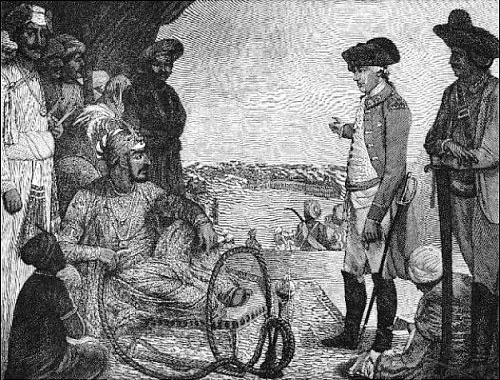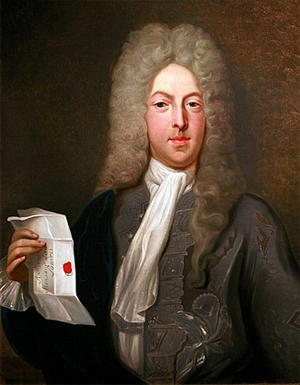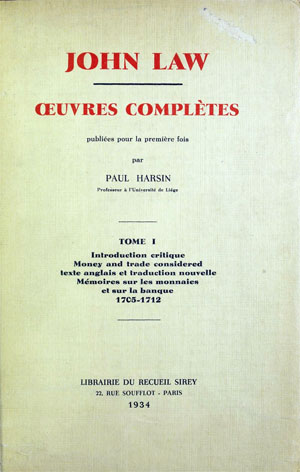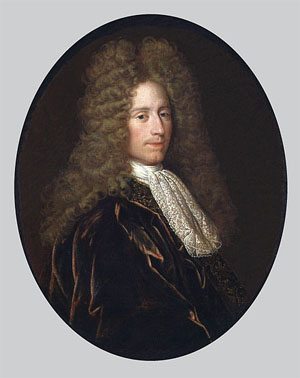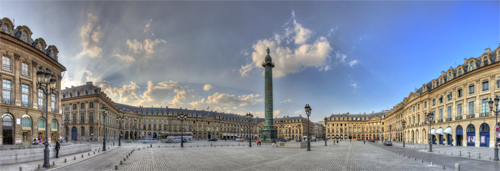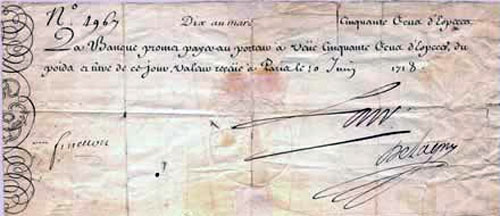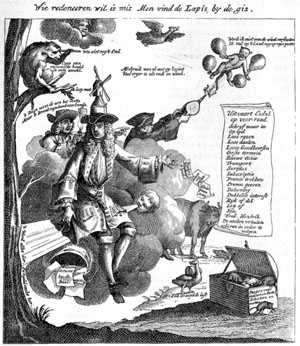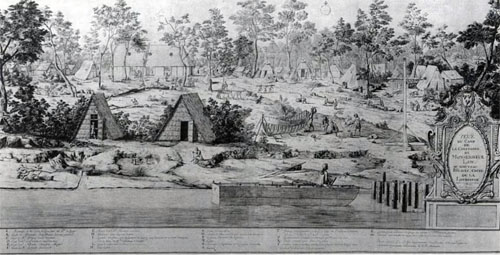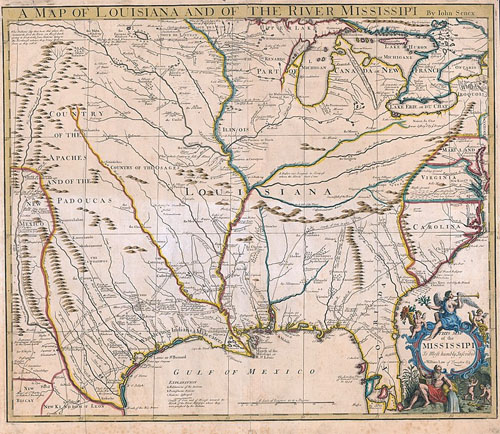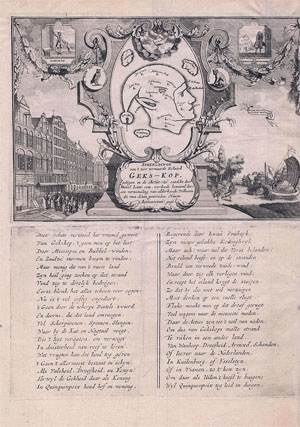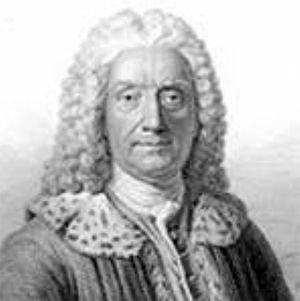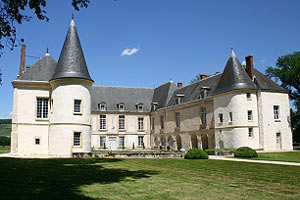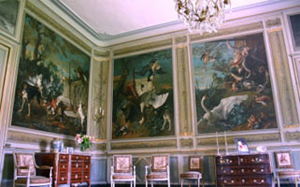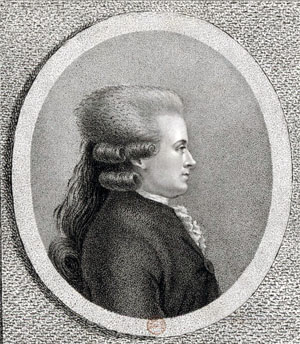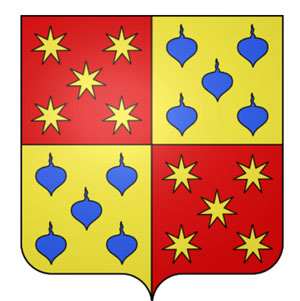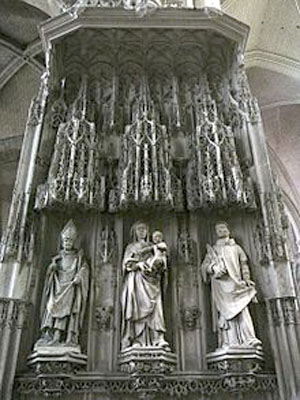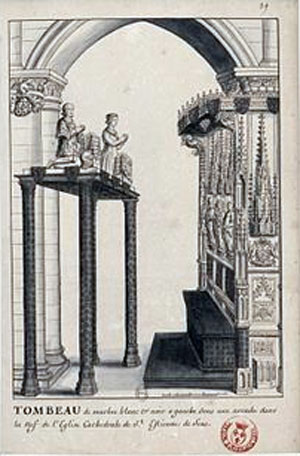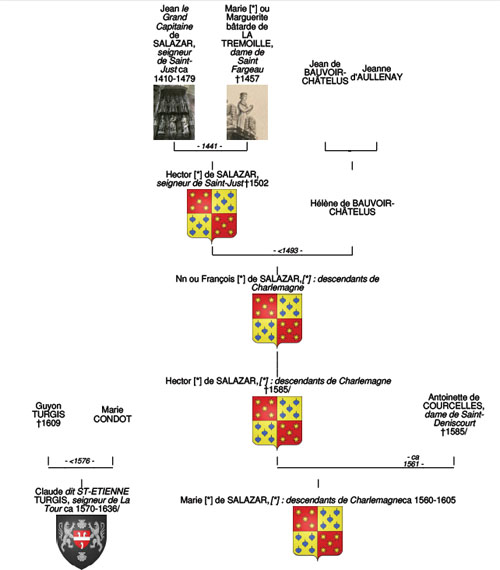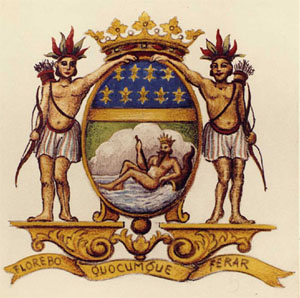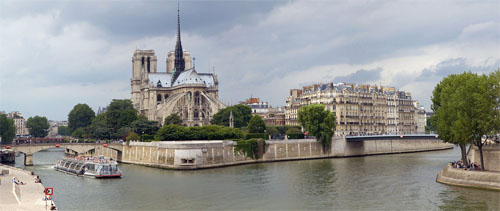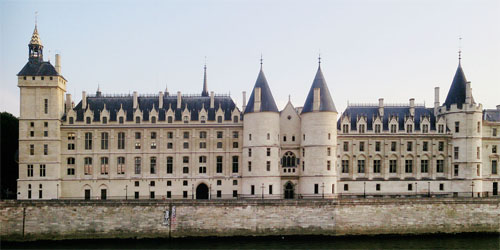The John Law Family
by various sources
Vyasa too, the son of Parasara before mentioned, has decided, that 'the Veda with its Angas, or the six compositions deduced from it, the revealed system of medicine, the Puranas, or sacred histories, and the code of Menu were four works of supreme authority, which ought never to be shaken by arguments merely human.’
It is the general opinion of Pandits, that Brahma taught his laws to Menu in a hundred thousand verses, which Menu explained to the primitive world, in the very words of the book now translated, where he names himself, after the manner of ancient sages, in the third person, but in a short preface to the law tract of Nared, it is asserted, that 'Menu, having written the laws of Brahma in a hundred thousand slocas or couplets, arranged under twenty-four heads in a thousand chapters, delivered the work to Nared, the sage among gods, who abridged it, for the use of mankind, in twelve thousand verses, and gave them to a son of Bhrigu, named Sumati, who, for greater ease to the human race, reduced them to four thousand; that mortals read only the second abridgement by Sumati, while the gods of the lower heaven, and the band of celestial musicians, are engaged in studying the primary code, beginning with the fifth verse, a little varied, of the work now extant on earth; but that nothing remains of NARED’s abridgement, except an elegant epitome of the ninth original title on the administration of justice.' Now, since these institutes consist only of two thousand six hundred and eighty five verses, they cannot be the whole work ascribed to Sumati, which is probably distinguished by the name of the Vriddha, or ancient Manava, and cannot be found entire; though several passages from it, which have been preserved by tradition, are occasionally cited in the new digest.
A number of glosses or comments on Menu were composed by the Munis, or old philosophers, whose treatises, together with that before us, constitute the Dherma sastra, in a collective sense, or Body of Law; among the more modern commentaries, that called Medhatithi, that by Govindaraja, and that by Dharani-Dhera, were once in the greatest repute; but the first was reckoned prolix and unequal; the second concise but obscure; and the third often erroneous. At length appeared Culluca Bhatta; who, after a painful course of study and the collation of numerous manuscripts, produced a work, of which it may, perhaps, be said very truly, that it is the shortest, yet the most luminous, the least ostentatious, yet the most learned, the deepest, yet the most agreeable, commentary ever composed on any author ancient or modern, European or Asiatick. The Pandits care so little for genuine chronology, that none of them can tell me the age of Culluca, whom they always name with applause; but he informs us himself, that he was a Brahmen of the Varendra tribe, whose family had been long settled in Gaur or Bengal, but that he had chosen his residence among the learned, on the banks of the holy river at Casi. His text and interpretation I have almost implicitly followed, though I had myself collated many copies of Menu, and among them a manuscript of a very ancient date: his gloss is here printed in Italicks; and any reader, who may choose to pass it over as if unprinted, will have in Roman letters an exact version of the original, and may form some idea of its character and structure, as well as of the Sanscrit idiom which must necessarily be preserved in a verbal translation; and a translation, not scrupulously verbal, would have been highly improper in a work on so delicate and momentous a subject as private and criminal jurisprudence.
Should a series of Brahmens omit, for three generations, the reading of Menu, their sacerdotal class, as all the Pandits assure me, would in strictness be forfeited; but they must explain it only to their pupils of the three highest classes; and the Brahmen, who read it with me, requested most earnestly, that his name might be concealed; nor would he have read it for any consideration on a forbidden day of the moon, or without the ceremonies prescribed in the second and fourth chapters for a lecture on the Veda: so great, indeed, is the idea of sanctity annexed to this book, that, when the chief native magistrate at Banares endeavoured, at my request, to procure a Persian translation of it, before I had a hope of being at any time able to understand the original, the Pandits of his court unanimously and positively refused to assist in the work; nor should I have procured it at all, if a wealthy Hindu at Gaya had not caused the version to be made by some of his dependants, at the desire of my friend Mr. [Jacques Louis Law de Clapernon? or Baron Jean Law de Lauriston?] Law. [1776]
Institutes of Hindu Law: Or, The Ordinances of Menu, According to the Gloss of Culluca. Comprising the Indian System of Duties, Religious and Civil, Verbally translated from the original Sanscrit, With a Preface, by Sir William Jones
"In relation to his Translation, it was made by the orders of Mr. Barthelemi, First Counselor in Pondicherry. Having a great number of interpreters for him, he had them translate some Indian works with all possible accuracy: but the wars of India & the ruin of Pondicherry resulted in the loss of all that he had gathered on these objects: and only the last translation of Zozur, of which only one complete copy remains, between the hands of M. Teissier de la Tour nephew of M. leConsr. Barthelemy. It's certain the one that we made the copy that we have in the Library of His Majesty, and which no doubt had not had time to complete when M. de Modave embarked to return to Europe."
I have not been able to gather any information on Tessier -- or Teissier -- de la Tour.That the crowning of the decorated pot symbolizes a "recapitulation" is also suggested by a smallpox healing rite witnessed in 1709 by the French missionary, Jean-Jacques Tessier de Queralay, in Pondichery. Apparently this ritual was performed to placate Mariamma, the smallpox goddess who, as we heard in chapter 7, had her head chopped off by her son and reconnected to the body of an Untouchable woman. This is what Tessier observed:
"Carrying on her head a vase filled with water and margosa leaves, and holding in her right hand some leaves of that tree and a rattan cane, a Paraiyan (Untouchable) woman, a servant of this goddess, proceeds through town -- accompanied of musicians and other persons in charge of receiving alms. Each time that she stops in front of a house, she dances, the vase on her head. (in [Sri] Dharmapal 1982: 130-31, translation mine)."
The procession documented by the priest reenacted the ambiguous corporal predicament of this goddess whose head, here symbolized by the karakam pot, was attached to the body of a female Untouchable specialist. Does this not suggest that in the context of our "invitatnoi" the crowning with the karakam represents the reconnection of the disembodied parents, "heads of the household" (talaikkattu) to the bodies of their "headless" children?
-- Religion Against the Self: An Ethnography of Tamil Rituals, by Isabelle NabokovThe Actors
The Accused
Nayiniyappa: Chief commercial broker to the Compagnie des Indes in Pondichéry, 1708–1716
Nayiniyappa’s Family and Associates
Guruvappa: Nayiniyappa’s eldest son
The Widow Guruvappa: Guruvappa’s wife, Nayiniyappa’s daughter-in-law
Tiruvangadan: A merchant of Madras, and Nayiniyappa’s business associate and brother-in-law
Ramanada: Nayiniyappa’s business associate.
Ananda Ranga Pillai: Nayiniyappa’s nephew, Tiruvangadan’s son, and chief commercial broker to the Compagnie des Indes, 1748–1761.
French Trader-Administrators
Guillaume André Hébert: Governor of Pondichéry 1708–1713; Général de la nation, 1715–1718
Hébert fils: The governor’s son and a junior employee of the Compagnie des Indes
Pierre André Prévost de La Prévostière: Governor of Pondichéry, 1718–1721
Nicolas de La Morandière: Pondichéry councillor, author of several appeals filed by the accused Indians
The Missionaries
Guy Tachard: First superior of the Jesuit mission in Pondichéry
Jean-Venant Bouchet: Second superior of the Jesuit mission in Pondichéry
Père Esprit de Tours: Capuchin missionary and parish priest to Europeans in Pondichéry
Jean-Jacques Tessier de Queralay: Representative of the Missions étrangères de Paris.
The Interpreters
Manuel Geganis: A French-speaking Tamil Christian, son of the Jesuits’ chief catechist (religious interpreter)
Père Turpin: A Tamil-speaking Jesuit missionary
Cordier: A French man born in India to a company employee
-- A Colonial Affair: Commerce, Conversion, and Scandal in French India, by Danna AgmonIf Sylvia Murr’s claim that ‘at the beginning of the eighteenth century, all discourse on India was tributary to the ‘Relations’ supplied by the missionaries, Catholic and Protestant’,1 [‘au debut du 18e siecle, tout discours sur l’lnde etait tributaire des ‘Relations’ foumies paries missionaires, catholiques ou protestants’ Murr 1986: 303.] is somewhat overstated, it nevertheless serves to emphasise the importance of such missionary ‘relations’ prior to the arrival in India of Anquetil-Duperron, who appears to have been the first European to visit India for purely scholarly purposes. Among Protestants, Murr mentions Ziegenbalg and also Lord and Roger, although the latter were not missionaries, nor writing at the beginning of the eighteenth century.
Among Catholics, the main contributors to Indological discourse of the eighteenth century were French, in particular the Jesuits associated with the Carnatic mission, but also the Capuchins Jean-Jacques Tessier de Queralay and Thomas de Poitiers. At the end of the century another French priest, the Abbe Jean-Antoine Dubois, a secular priest of the Missions Etrangeres, was responsible for publishing as his own work one of the most significant works of the earlier generation of French missionaries.2 [Despite being ‘a respected member of the Missions Etrangeres, a body traditionally hostile to the Jesuits’, Dubois’s relations with the Jesuits were good, and he supported the return of the Jesuits to Madurai after the restoration of the Society (Ballhatchet 1998: 3).]
These writers produced a number of significant works on Indian religions, among them the Relation des erreurs qui se trouvent dans la religion des gentils malabars de la Coste Coromandelle3 [A substantial part of the text of the Relation des erreurs qui se trouvent dans la religion des gentils malabars de la Coste Coromandelle was printed in Picart’s Ceremonies et coutumes religieuses de tous les peuples du monde under the title: ‘Dissertation historique sur les Dieux des Indiens orientaux.’ (Picart 1723: 83-100). This is immediately followed by a ‘Lettre de P. Bouchet sur la Religion des Indiens Orientaux’ (Bouchet’s second letter to Huet, XIII: 95-225). A critical edition of the Relation des erreurs from three manuscripts, one of which attributes the work to Nobili was published by Caland (Caland 1923). Dharampal, who has used a fourth manuscript, discusses the origin of the work and its attribution to Bouchet (Dharampal 1982a: 233-239).] of Jean Venant Bouchet, the Traite de la Religion des Malabars4 [Extensive extracts from Tessier de Queralay’s manuscript were published in Bumouf and Jacquet 1835. The full text was published in Dharampal 1982a.] of Tessier de Queralay, Le Paganisme des Indiens nommes Tamouls of Thomas de Poitiers, the Moeurs et Coutumes des Indiens5 [Sylvia Murr identified a manuscript compiled in 1776-1777 by a French artillery officer Nicholas-Jacques Desvaulx as a version of Coeurdoux’s lost work, and has shown that Dubois’s celebrated work, Hindu Manners, Customs and Ceremonies (1816; Mceurs, Institutions et Ceremonies des Peuples de l’lnde, 1825) is based on Coeurdoux (Murr 1987). In his Prefatory note to Beauchamp’s 1906 edition, Friedrich Max Muller noticed that the author of the work ‘really belongs to a period previous to the revival of Sanskrit studies in India, as inaugurated by Wilkins, Sir William Jones and Colebrooke’, although he did not doubt that the author was Dubois.] of Gaston-Laurent Coeurdoux, and the infamous Ezourvedam.6 [Among those to whom the Ezourvedam has been attributed are, in addition to Nobili, five French Jesuits of the eighteenth century: Bouchet (1655-1732), Pierre Martin (1665- 1716), Jean Calmette (1693-1740), Antoine Mosac (1704-C.1784), and Jean de Villette (dates uncertain). Rocher reviews the long debate over the authorship of the Ezourvedam concluding that ‘the author of the [Ezourvedam] may be one of these, but he may also be one of their many more or less well known confreres. In the present state of our knowledge we cannot go any further than that.’ (Rocher 1984: 60). If nothing else, this demonstrates the sheer number of Jesuits who had significant knowledge of Indian languages and religions. The Ezourvedam was published in 1778 as L’Ezour-Vedam, ou Ancien Commentaire du Vedam contenant I’esposition des opinions religieuses & philosophiques des Indiens, but doubts about its authenticity immediately surfaced. Pierre Sonnerat showed it to ‘a learned but fanatic Brahman’ who convinced him that ‘[ i]t is definitely not one of the four Vedams, notwithstanding its name. It is a book of controversy, written by a missionary’ (Voyage aux Indes Orientates (1782) I: 215, cited in Rocher 1984: 13).] However, only the first and the last of these were published in the eighteenth century. Of more immediate impact were the letters of the French Jesuits, published in the Lettres edifiantes et curieuses, the Memoires de l'Academie des Inscriptions et Belles-Lettres and elsewhere.7 [The letters were widely read, both in the Lettres edifiantes and in other publications, for example in Picart’s collection in which Bouchet’s long, undated letter concerning transmigration (XIII: 95-226) was reprinted (Picart 1723: 100-106). A brief account of the origin, editions and influence of the Lettres edifiantes is given by Retif 1951.] The Jesuit letters from India had been contributing to European knowledge of Indian religions since the sixteenth century.8 [Zachariae goes so far as to say that if Europeans at the end of the 16th and the beginning of the 17th century ‘were tolerably acquainted with ‘Hinduism’, with the religion and mythology of India ... that knowledge was attained through the letters which the Jesuit missionaries labouring in India sent to the members of their Order in Europe.’ (Zachariae 1921: 151). For earlier Jesuit ethnographic contributions see Rubies 2000.] It will be argued, however, that for a number of reasons it was the letters of the eighteenth century which were particularly important in the establishment of the concept of a pan-Indian religion, which subsequently came to be called Hinduism. Although this analysis is based primarily on the letters published in the Lettres edifiantes et curieuses, the other letters, both published and unpublished also played a role, and reference will be made to these and to the other mentioned works on Indian religions by French writers in this period. Among the Jesuits who served in the Madurai, Carnatic and Bengal missions and contributed to the Lettres edifiantes were Jean Venant Bouchet (1655-1732, in India from 1688), Pierre Martin (1665-1716, in India from 1694), Pierre de la Lane (1669- 1746, in India from 1704), Etienne le Gac (1671-1738, in India by 1709), Gaston-Laurent Coeurdoux (1691-1779, in India from 1732), Jean Calmette (1693-1740, in India from 1725 or 1726), Jean Francois Pons (1698-C.1753, in India from 1726).
-- Hinduism in the Jesuit Lettres edifiantes et curieuses, Chapter 7 from "Mapping Hinduism 'Hinduism' and the Study of Indian Religions, 1600-1776," by Will Sweetman, 2003
Louis Barthelemy is much better known; although his career in India runs parallel to that of Porcher des Oulches, of the two he is the more prominent one and holds the highest offices. His name appears repeatedly in the official documents of the French Company. He was born at Montpellier, circa 1695, came to India in 1729, and stayed there until his death at Pondicherry, on 29 July 1760. He served at Mahe, was a member of the council at Chandernagore, and was called to Pondicherry in 1742. His duties at Pondicherry were twice interrupted in later years: in 1748 he was appointed governor of Madras, and in 1753-54 he preceded Porcher as commander of Karikal. He rose to the rank of "second du Conseil Superieur," and in the short period in 1755, between the departure of Godeheu and the arrival of de Leyrit, Barthelemy's name appears first on all official documents. It should perhaps be mentioned, first, that on 22 February 1751 Barthelemy represented the father of the bride at the wedding of Jacques Law -- Dupleix was the witness for the bridegroom --, and second, that on 8 August 1758 he was godfather of Jacques Louis Law. These two entries seem to suggest that he was indeed close to the Law family, whose interpreter has been given credit for the translation of the EzV (see p. 28). It should also be pointed out that Barthelemy died more than half a year after Maudave -- and the EzV -- reached Lorient on 2 February 1760.
-- The Ezourvedam Manuscripts, Excerpt from Ezourvedam: A French Veda of the Eighteenth Century, Edited with an Introduction by Ludo Rocher
...
What are we to make of this? Today we know, thanks to the efforts of many scholars, that Voltaire's Ezour-vedam was definitely authored by one or several French Jesuits in India, and Ludo Rocher has convincingly argued that the text was never translated from Sanskrit but written in French and then partially translated into Sanskrit (Rocher 1984: 57-60). Consequently, there never was a translator from Sanskrit to French -- which also makes it extremely unlikely that any Brahmin, whether from Benares in the north or Cherignan (Seringham) in the south, ever gave this French manuscript to Maudave. Whether Maudave was "a close friend of one of the principal brahmins" and how old and wise that man was appear equally irrelevant. Voltaire's story of the Brahmin translator appears to be entirely fictional and also squarely contradicts the only relevant independent evidence, Maudave's letter to Voltaire, which (rightly or wrongly; see Chapter 7) named a long-dead French Jesuit as translator and imputed Jesuit tampering with the text. Since it is unlikely that Maudave would arbitrarily change such central elements of his story when he met Voltaire, the inevitable conclusion is that Voltaire created a narrative to serve a particular agenda and changed that story when the need arose.
-- The Birth of Orientalism, by Urs App
The first Director General for the [French East India] Company was François de la Faye,...
La Faye was the owner of an extensive art collection, two hotels in Paris, and another in Versailles. When he acquired the ancient château de Condé in 1719, he commissioned the most fashionable artists of his time and the architect Giovanni Niccolò Servandoni for elaborate improvements....
The Marquis was a member of the French Academy, a director of the French India Company, and accordingly, was a very rich man. In his mansion in Paris, he often received such famous people as Voltaire and Crébillon...
At a later date, the castle belonged to the Count de la Tour du Pin Lachaux, through his marriage with the niece of the Marquis de la Faye...
In 1814, the Countess de Sade, the daughter-in-law of the famous Marquis de Sade, inherited Condé from her cousin, La Tour du Pin. Since this time and up to 1983, the castle remained the property of the Sade family, who restored it with much care after the two World Wars.
-- French East India Company, by Wikipedia
Jacques Alexandre Bernard Law, marquis de Lauriston
Jacques Alexandre Bernard LAW de LAURISTON
Marquis de Lauriston, Maréchal de France (1823)
• Born 1 February 1768 - Pondichéry (Inde)
• Deceased 11 June 1828, aged 60 years old
• Maréchal de France, Pair de France, Grand Croix Légion d'Honneur
Parents
• Jean LAW de LAURISTON, Chevalier de Saint-Louis 1719-1797 (Baron de Lauriston, Col d'infanterie, Gouverneur de Pondichéry)
• Jeanne de CARVALHO 1735-1805
Spouses, children, grandchildren and great-grandchildren
• Married in 1789 to Antoinette Claudine Julie Le DUC, Châtelain de Soisy-sur-Seine, born 29 September 1772 - La Fère (02), deceased 14 January 1873 - Paris VIII° (75) aged 100 years old (Parents : Claude Marie DUC dit Le DUC, sgr de Valenciennes-en-Dombes 1713-1807 & Marie Charlotte Françoise de RONTY, dame de Richecourt) with
Auguste Jean Alexandre LAW de LAURISTON, voir légion d'honneur (Grand officier) 1790-1860 Married 21 April 1820 to Jeanne Louise Délie CARETTE †1854 with
Valentine Marie LAW de LAURISTON 1820- Married 10 February 1841 to Ange-Bernard MERCIER de BOISSY 1801-1856 with :
o Arthur Ange Augustin MERCIER de BOISSY 1844-
o Paul Marie Joseph MERCIER de BOISSY 1850-1897/
Alexandre Louis Joseph LAW de LAURISTON, voir légion d'honneur (Chevalier) 1821- Married in 1849 to Marie Pauline LANJUINAIS 1829-1887 with :
o Henri LAW de LAURISTON 1850-
Jeanne Louise Marie Thérèse LAW de LAURISTON 1852-
Charles Louis Alexandre LAW de LAURISTON, comte 1824- Married 15 April 1852 to Marie Félicie PASCAL 1831-1905 with :
Jacques Louis Alexandre Henri LAW de LAURISTON 1853-
Pierre Jules Louis Roger LAW de LAURISTON, comte 1857-
o Emile Paul Louis Hubert LAW de LAURISTON 1860-
Jeanne LAW de LAURISTON 1862-1921
o Arthur Louis Firmin LAW de LAURISTON, Voir légion d'honneur (officier) 1829-1888
Coralie LAW de LAURISTON 1800-1891 Married in 1822 to Edouard HOCQUART de TURTOT, comte 1792-1852 with
• Louis HOCQUART de TURTOT Married in July 1858 to Clémentine COSSIN de CHOURSES †1859
Henri HOCQUART de TURTOT, Voir Légion d'Honneur (Chevalier) 1825-1901 Married 12 August 1864 to Marie Blanche Louise Sophie EUDES de CATTEVILLE de MIRVILLE 1838-1925 with :
Etienne HOCQUART de TURTOT 1866-1918
Jean HOCQUART de TURTOT, comte Hocquart de Turtot 1868-1940
o Louis HOCQUART de TURTOT
• Antoine HOCQUART de TURTOT, comte 1872-1954
o Napoléon Adolphe LAW de LAURISTON 1805-1867
Siblings
Jeanne LAW de LAURISTON 1756-1830
o Anne LAW de LAURISTON 1761-1762
o Jean LAW de LAURISTON 1765-1765
o Jean Guillaume LAW de LAURISTON 1766-
Jacques Alexandre Bernard LAW de LAURISTON, Marquis de Lauriston 1768-1828
o François Jean LAW de LAURISTON †1822
Charles Louis LAW de LAURISTON, voir receveurs généraux 1769-1849
o Joseph Charles LAW de LAURISTON 1770-
Louis Georges LAW de LAURISTON, voir receveurs généraux 1773-1834
Baron Jean Law de Lauriston
Jean LAW de LAURISTON
Chevalier de Saint-Louis (1780), Baron de Lauriston
• Born 5 October 1719
• Baptized 3 November 1719 - St-Roch, Paris I° (75)
• Deceased 16 July 1797, aged 77 years old
• Baron de Lauriston, Col d'infanterie, Gouverneur de Pondichéry
Parents
• Guillaume LAW de LAURISTON, baron de Lauriston †1752 (Directeur de la Compagnie des Indes et associé de son frère.)
o Rebecca DESVES de PERCY (De l'illustre maison de Percy, comtes et ducs de Northumberland)
Spouses, children, grandchildren and great-grandchildren
• Married in March 1755 to Jeanne de CARVALHO, born in 1735, deceased in 1805 aged 70 years old (Parents : Alexandre de CARVALHO †/1767 & Jeanne de SAINT-HILAIRE) with
Jeanne LAW de LAURISTON 1756-1830 Married in 1777 to Charles Antoine de LOPEZ de la FARE with
Anne Jeanne Marie Françoise de LOPEZ-LAFARE †1805 Married to Victor Louis Joseph de MARQUET with :
• Clémence de MARQUET, Comtesse de Marquet 1803-1885
o Anne LAW de LAURISTON 1761-1762
o Jean LAW de LAURISTON 1765-1765
o Jean Guillaume LAW de LAURISTON 1766-
Jacques Alexandre Bernard LAW de LAURISTON, Marquis de Lauriston 1768-1828 Married in 1789 to Antoinette Claudine Julie Le DUC, Châtelain de Soisy-sur-Seine 1772-1873 with
Auguste Jean Alexandre LAW de LAURISTON, voir légion d'honneur (Grand officier) 1790-1860 Married 21 April 1820 to Jeanne Louise Délie CARETTE †1854 with :
Valentine Marie LAW de LAURISTON 1820-
Alexandre Louis Joseph LAW de LAURISTON, voir légion d'honneur (Chevalier) 1821-
Charles Louis Alexandre LAW de LAURISTON, comte 1824-
o Arthur Louis Firmin LAW de LAURISTON, Voir légion d'honneur (officier) 1829-1888
Coralie LAW de LAURISTON 1800-1891 Married in 1822 to Edouard HOCQUART de TURTOT, comte 1792-1852 with :
• Louis HOCQUART de TURTOT
Henri HOCQUART de TURTOT, Voir Légion d'Honneur (Chevalier) 1825-1901
o Napoléon Adolphe LAW de LAURISTON 1805-1867
o François Jean LAW de LAURISTON †1822
Charles Louis LAW de LAURISTON, voir receveurs généraux 1769-1849 Married to Agnès de BOUBERS-ABBEVILLE 1785-1816 with
Augusta Hyacinthe LAW de LAURISTON 1814-1897 Married in 1837 to Jean Joseph Amans PÉCOUL, baron 1795-1870 with :
Auguste Louis PÉCOUL, baron 1837-1916
o Edgard PÉCOUL 1842-1859
o Joseph Charles LAW de LAURISTON 1770-
Louis Georges LAW de LAURISTON, voir receveurs généraux 1773-1834 Married in 1806 to Agnès de VERNETY 1785-1871 with
Gustave LAW de LAURISTON, Voir légion d'honneur (Commandeur) 1806-1882 Married in 1843 to Esther MASCARÈNE de RIVIÈRE with :
o Gustave LAW de LAURISTON, voir légion d'honneur (Chevalier) 1844-1872
o Georges LAW de LAURISTON 1808-
o Olivier LAW de LAURISTON, Voir légion d'honneur (Chevalier) 1809-1859
Marie-Blanche (Malcy) LAW de LAURISTON 1811-1885 Married 12 June 1833, Nantes (44), to Jean MARION de BEAULIEU, baron 1783-1864 with :
"Adrienne" Marie MARION de BEAULIEU 1840-1891
o Marguerite Georgette MARION de BEAULIEU
o Geneviève Marie MARION de BEAULIEU
Hyacinthe LAW de LAURISTON, comte 1816- Married 28 February 1842, Nantes (44), to Aline NOURY 1817-1896 with :
o Georges LAW de LAURISTON 1844-1914
Aline LAW de LAURISTON 1850-1884
o Edouard LAW de LAURISTON 1851-1867
• Valentine LAW de LAURISTON 1820- Married in 1842 to M de BOISSY
Marguerite Amélie LAW de LAURISTON 1823-1894 Married 5 August 1846, Nantes (44), to Marie "Alfred" Ernest de CORNULIER-LUCINIÈRE, voir Légion d'Honneur (Chevalier) 1822-1855 with :
o Pierre Marie Alfred de CORNULIER-LUCINIÈRE 1847-
o Anne Marie Marguerite de CORNULIER-LUCINIÈRE 1850-1891
Charles LAW de LAURISTON-BOUBERS, baron de Lauriston de Boubers 1825-1909 Married 9 April 1856 to Marie de BOUBERS-ABBEVILLE 1832-1904 with :
Emmanuel LAW de LAURISTON-BOUBERS, marquis 1857-1922
• Elisabeth LAW de LAURISTON-BOUBERS 1861-1888
Olivier LAW de LAURISTON-BOUBERS, baron 1865-1941
Siblings
Jean LAW de LAURISTON, Chevalier de Saint-Louis 1719-1797
o Rebecca Louise LAW de LAURISTON 1720-
• Jeanne Marie LAW de LAURISTON 1722-
Jacques François Le Chevalier Law LAW de LAURISTON, comte de Tancarville 1724-1767
Elisabeth Jeanne LAW de LAURISTON 1725-1799
o Georges LAW de LAURISTON ca 1726
Jacques Louis Law de Clapernon
Baron de Clapernon
• Born 8 August 1758 - Pondichéry (Inde)
• Gouverneur de Mahé
Parents
• Jacques François Le Chevalier Law LAW de LAURISTON, comte de Tancarville 1724-1767 (Comte de Tancarville)
• Marie de CARVALHO
Spouses, children and grandchildren
o Married to Louise YVON with
Joseph Amédée Geneviève Saint Caprais LAW de CLAPERNON 1805 Married 24 February 1829, Toulon (83), to Rose Françoise Suzanne DEINSA †1831 with
• Jacques Armand Edouard LAW de CLAPERNON 1831 Married to Eudoxie FALLOFIELD 1831
Joseph Amédée Geneviève Saint Caprais LAW de CLAPERNON 1805 Married 7 January 1832, Pondichéry (Inde), to Marie Françoise Emma MONNIER with
• Pauline LAW de CLAPERNON 1832 Married 5 July 1847, Pondichéry (Inde), to John HOLROYD-DOVETON 1823
Siblings
Marie Joséphine LAW de LAURISTON 1752
Jacques Louis LAW de CLAPERNON, Baron de Clapernon 1758
Jacques François Law
Jacques François LAW de LAURISTON Le Chevalier Law
comte de Tancarville
• Born 20 January 1724
• Deceased in 1767, aged 43 years old
• Comte de Tancarville
Parents
• Guillaume LAW de LAURISTON, baron de Lauriston †1752 (Directeur de la Compagnie des Indes et associé de son frère.)
o Rebecca DESVES de PERCY (De l'illustre maison de Percy, comtes et ducs de Northumberland)
Spouses, children, grandchildren and great-grandchildren
• Married 22 February 1751, Pondichéry (Inde), to Marie de CARVALHO (Parents : Alexandre de CARVALHO †/1767 & Jeanne de SAINT-HILAIRE) with
Marie Joséphine LAW de LAURISTON 1752 Married 19 October 1767, Pondichéry (Inde), to Louis de BRUNO, maire de Saint-Germain-en-Laye †1814 with
Général-baron Adrien de BRUNO, Baron Bruno 1771-1861 Married to Jacynthe Agnès Fernande de FOLARD 1775-1866 with :
Edouard Hubert Joseph de BRUNO, baron Bruno 1802-1870
Adrienne de BRUNO 1816
Jacques Louis LAW de CLAPERNON, Baron de Clapernon 1758 Married to Louise YVON with
Joseph Amédée Geneviève Saint Caprais LAW de CLAPERNON 1805 Married 24 February 1829, Toulon (83), to Rose Françoise Suzanne DEINSA †1831 with :
• Jacques Armand Edouard LAW de CLAPERNON 1831
Joseph Amédée Geneviève Saint Caprais LAW de CLAPERNON 1805 Married 7 January 1832, Pondichéry (Inde), to Marie Françoise Emma MONNIER with :
• Pauline LAW de CLAPERNON 1832
Siblings
Jean LAW de LAURISTON, Chevalier de Saint-Louis 1719-1797
o Rebecca Louise LAW de LAURISTON 1720-
• Jeanne Marie LAW de LAURISTON 1722-
Jacques François Le Chevalier Law LAW de LAURISTON, comte de Tancarville 1724-1767
Elisabeth Jeanne LAW de LAURISTON 1725-1799
o Georges LAW de LAURISTON ca 1726
William Law of Lauriston
Guillaume LAW de LAURISTON
(William LAW de LAURISTON)
baron de Lauriston
• Deceased in 1752
• Directeur de la Compagnie des Indes et associé de son frère.
Parents
• William LAW of BRUNTON, baron de Lauriston †1684 (Propriétaire de Lauriston Castle. banquier à Édimbourg.)
• Jeanne CAMPBELL (Fille du clan Campbell des ducs d'ARGYLL.)
Spouses, children, grandchildren and great-grandchildren
o Married 3 July 1716, Londres (Royaume-Uni), to Rebecca DESVES de PERCY,
De l'illustre maison de Percy, comtes et ducs de Northumberland
with
Jean LAW de LAURISTON, Chevalier de Saint-Louis 1719-1797 Married in March 1755 to Jeanne de CARVALHO 1735-1805 with
Jeanne LAW de LAURISTON 1756-1830 Married in 1777 to Charles Antoine de LOPEZ de la FARE with :
Anne Jeanne Marie Françoise de LOPEZ-LAFARE †1805
o Anne LAW de LAURISTON 1761-1762
o Jean LAW de LAURISTON 1765-1765
o Jean Guillaume LAW de LAURISTON 1766-
Jacques Alexandre Bernard LAW de LAURISTON, Marquis de Lauriston 1768-1828 Married in 1789 to Antoinette Claudine Julie Le DUC, Châtelain de Soisy-sur-Seine 1772-1873 with :
Auguste Jean Alexandre LAW de LAURISTON, voir légion d'honneur (Grand officier) 1790-1860
Coralie LAW de LAURISTON 1800-1891
o Napoléon Adolphe LAW de LAURISTON 1805-1867
o François Jean LAW de LAURISTON †1822
Charles Louis LAW de LAURISTON, voir receveurs généraux 1769-1849 Married to Agnès de BOUBERS-ABBEVILLE 1785-1816 with :
Augusta Hyacinthe LAW de LAURISTON 1814-1897
o Joseph Charles LAW de LAURISTON 1770-
Louis Georges LAW de LAURISTON, voir receveurs généraux 1773-1834 Married in 1806 to Agnès de VERNETY 1785-1871 with :
Gustave LAW de LAURISTON, Voir légion d'honneur (Commandeur) 1806-1882
o Georges LAW de LAURISTON 1808-
o Olivier LAW de LAURISTON, Voir légion d'honneur (Chevalier) 1809-1859
Marie-Blanche (Malcy) LAW de LAURISTON 1811-1885
Hyacinthe LAW de LAURISTON, comte 1816-
• Valentine LAW de LAURISTON 1820-
Marguerite Amélie LAW de LAURISTON 1823-1894
Charles LAW de LAURISTON-BOUBERS, baron de Lauriston de Boubers 1825-1909
o Rebecca Louise LAW de LAURISTON 1720-
• Jeanne Marie LAW de LAURISTON 1722- Married 6 February 1743 to Jean Jacques de La COUR, comte
Jacques François Le Chevalier Law LAW de LAURISTON, comte de Tancarville 1724-1767 Married 22 February 1751, Pondichéry (Inde), to Marie de CARVALHO with
Marie Joséphine LAW de LAURISTON 1752 Married 19 October 1767, Pondichéry (Inde), to Louis de BRUNO, maire de Saint-Germain-en-Laye †1814 with :
Général-baron Adrien de BRUNO, Baron Bruno 1771-1861
Jacques Louis LAW de CLAPERNON, Baron de Clapernon 1758 Married to Louise YVON with :
Joseph Amédée Geneviève Saint Caprais LAW de CLAPERNON 1805
Elisabeth Jeanne LAW de LAURISTON 1725-1799 Married in 1744 to François Xavier de BOISSEROLLE, sgr de Boisvilliers 1713-1793 with
o Jeanne de BOISSEROLLE
• Marie Anne de BOISSEROLLE 1739-1825 Married before 1789 to Louis Alexandre,baron d'Albignac d'Arre d'ALBIGNAC, Baron d'Albignac d'Arre 1739-1825
• Eulalie Catherine Jacques de BOISSEROLLE 1760-1833 Married in 1777 to Jean François Xavier de MÉNARD
Jean Aurèle de BOISSEROLLE, voir Légion d'honneur (Officier) 1764-1829 Married in 1794 to Marguerite d'ASTANIÈRES 1775-1846 with :
Aimée de BOISSEROLLE
• Joseph Aurèle de BOISSEROLLE 1801-1848
• Rosalie Rebecca Dorothée de BOISSEROLLE Married in 1791 to Jean David AIGOIN, sgr de L'Euzière 1753-1840
o Georges LAW de LAURISTON ca 1726
Siblings
John LAW de LAURISTON, Comte de Valençay 1671-1729
André LAW of LAURISTON
Guillaume LAW de LAURISTON, baron de Lauriston †1752
o Robert LAW of LAURISTON
o Hugues LAW of LAURISTON
• Jeanne LAW of LAURISTON
o Janet LAW of LAURISTON
• Agnes LAW of LAURISTON
o Lilias LAW of LAURISTON
William Law of Brunton, Baron of Lauriston
William LAW of BRUNTON
D’hermines à la bande de gueules accompagnée de deux coqs d’azur
baron de Lauriston, Châtelain de Lauriston
• Deceased in 1684
• Propriétaire de Lauriston Castle. banquier à Édimbourg.
Parents
• James LAW of BRUNTON, baron de Brunton (Major d'un régiment.)
• Margareth PRESTON de PRESTONHALL
Spouses, children, grandchildren and great-grandchildren
• Married to Jeanne CAMPBELL,
Fille du clan Campbell des ducs d'ARGYLL.
(Parents : Dugald CAMPBELL & Annabella HAMILTON) with
John LAW de LAURISTON, Comte de Valençay 1671-1729 Married in 1701 to Katherine KNOLLYS †1747 with
• Mary Katherine LAW of LAURISTON 1712-1790 Married to William, viscount Wallingford KNOLLYS, vicomte 1694-1740
o John LAW de LAURISTON
André LAW of LAURISTON Married in 1695 to Bethia de MELVIL with
Edmund, évêque de Carlisle, LAW of BRUNTON 1703-1787 Married to Mary CHRISTIAN 1722-1762 with :
• Mary LAW of BRUNTON 1744-1768
Ewan LAW of BRUNTON 1747-1829
Edward, 1er lord Ellenborough, LAW, baron Ellenborough 1750-1818
Joanna LAW of BRUNTON 1753-1823
George, évêque de Bath et Wells, LAW of BRUNTON 1761-1845
Mungo of Pittilock LAW of BRUNTON Married to Isobel MAKGILL with :
Mungo of Pittilock LAW of BRUNTON †1800
Guillaume LAW de LAURISTON, baron de Lauriston †1752 Married 3 July 1716, Londres (Royaume-Uni), to Rebecca DESVES de PERCY with
Jean LAW de LAURISTON, Chevalier de Saint-Louis 1719-1797 Married in March 1755 to Jeanne de CARVALHO 1735-1805 with :
Jeanne LAW de LAURISTON 1756-1830
o Anne LAW de LAURISTON 1761-1762
o Jean LAW de LAURISTON 1765-1765
o Jean Guillaume LAW de LAURISTON 1766-
Jacques Alexandre Bernard LAW de LAURISTON, Marquis de Lauriston 1768-1828
o François Jean LAW de LAURISTON †1822
Charles Louis LAW de LAURISTON, voir receveurs généraux 1769-1849
o Joseph Charles LAW de LAURISTON 1770-
Louis Georges LAW de LAURISTON, voir receveurs généraux 1773-1834
o Rebecca Louise LAW de LAURISTON 1720-
• Jeanne Marie LAW de LAURISTON 1722- Married 6 February 1743 to Jean Jacques de La COUR, comte
Jacques François Le Chevalier Law LAW de LAURISTON, comte de Tancarville 1724-1767 Married 22 February 1751, Pondichéry (Inde), to Marie de CARVALHO with :
Marie Joséphine LAW de LAURISTON 1752
Jacques Louis LAW de CLAPERNON, Baron de Clapernon 1758
Elisabeth Jeanne LAW de LAURISTON 1725-1799 Married in 1744 to François Xavier de BOISSEROLLE, sgr de Boisvilliers 1713-1793 with :
o Jeanne de BOISSEROLLE
• Marie Anne de BOISSEROLLE 1739-1825
• Eulalie Catherine Jacques de BOISSEROLLE 1760-1833
Jean Aurèle de BOISSEROLLE, voir Légion d'honneur (Officier) 1764-1829
• Rosalie Rebecca Dorothée de BOISSEROLLE
o Georges LAW de LAURISTON ca 1726
o Robert LAW of LAURISTON
o Hugues LAW of LAURISTON
• Jeanne LAW of LAURISTON Married to John HAY of LATHAM
o Janet LAW of LAURISTON
• Agnes LAW of LAURISTON Married to J., Lord HAMILTON
o Lilias LAW of LAURISTON
Siblings
• James LAW of BRUNTON, sieur de Brunton
William LAW of BRUNTON, baron de Lauriston †1684
-- by Geneanet, org
Jean Law de Lauriston
by Wikipedia
Accessed: 7/30/21
Baron Jean Law de Lauriston, was born on October 5, 1719 in Paris. He was twice Governor General of Pondicherry. Not much is known about his life, but his contributions to the French Colonial Empire are notable.
Law was a nephew of the financier John Law, who had founded the Banque Générale and in 1719 had helped re-finance the French Indies companies.[1] Jean Law was a contemporary of Alivardi Khan who says about him that, "He saw with equal indignation and surprise the progress of the French and the English on the Coromandel Coast as well as in the Deccan."
Jean Law’s son was soldier and diplomat Jacques Lauriston.
In 1765
When in 1765 the town of Pondicherry was returned to France after a peace treaty with England, Pondicherry was in ruins. Jean Law de Lauriston, then Governor General set to rebuild the town on the old foundations and after five months 200 European and 2000 Tamil houses had been erected.
Transfer of Yanaon
Another significant event in the life of Lauriston was the re-transfer of Yanam to the French. A document dated 15 May 1765 showed that the villages of Yanam and Kapulapalem, with certain other lands, had been ceded by John White Hill and George Dolben. These two were Englishmen acting as agents for Jean Pybus, the head of the English settlement in Masulipatam. They had negotiated a deal (for taking over the villages) with Jean-Jacques Panon, the French Commissioner, who was Jean Law de Lauriston's deputy when he was Governor General of Pondicherry. The 1765 document mentions that France entered into possession of Yanam and its dependent territories with exemption from all export and import duties.
Memoire of 1767
Jean Law's Memoire: Mémoires sur quelques affaires de l’Empire Mogol 1756-1761 contains detailed information about the campaign of the Mughal Emperor Shah Alam II and his French allies against the British East India Company.[2]
Jean Law de Lauriston wrote Mémoires sur quelques affaires de l’Empire Mogol 1756-1761 which can be found in "Libraires de la Société de l'histoire des colonies françaises" Paris.
He stated in his "Memoire of 1767" as “It is from Yanam that we get out best ‘guiness’ (fine cloth). It is possible to have a commerce here worth more than a million livres per year under circumstances more favorable than those in which we are placed now, but always by giving advances much earlier, which we have never been in a position to do. From this place we also procured teakwood, oils rice and other grains both for the men as well as for the animals. Apart from commerce, Yanam enjoyed another kind of importance. The advantages which may be derived in a time of war from the alliances that we the French may conclude with several Rajas who sooner or later cannot fail to be dissatisfied with the English. Although the English gained an effective control over the Circars, Yanam enabled the French to enter into secret relations with the local chieftains. Yanam had some commercial importance".
Death
He died in Paris on July 16, 1797. There is a village in his name in Puducherry which is still today called as "Lawspet".
His son, Jacques Lauriston, became a general in the French army during the Napoleonic Wars.
References
1. William Dalrymple The Anarchy: The Relentless Rise of The East India Company, Bloomsbury Publishing, 2019, p.48.
2. "YouTube". https://www.youtube.com.

